The Building of Aslan
Updated 10/7/01
The Building of Aslan |
Updated 10/7/01 |
|
|
|
|
|
|
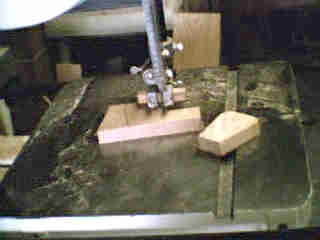 |
Updated on 10/7/01
The swivel cleat I used for the jib sheet suffered from "loose cleat" disease, so I had to abandon it. I also found that the jib clubfoot had disadvantages; you can't hook the clew of the sail to it until the sail is raised, and you can't just let the sheet loose so the sail just luffs around because the clubfoot bangs around up there. After several months of sailing, the eye bolt on the jib clubfoot was seriously deformed. So I decided to try and rig twin jib sheets and see if I had better sail control. I like the Harkin cam cleats, but mounting one right on the deck where the old swivel cleat went was a hassle ... the rough anti-skid on the deck abraded my knuckles when adjusting the jib sheet. So I cut out these blocks to raise the cleat up off the deck (I used 4/4 red oak.) |
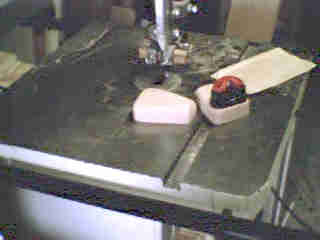 |
This shows how the blocks will raise the cam cleat off the deck. I had thought about putting a fairlead on the front of the block, but after rigging it, decided it was not necessary. |
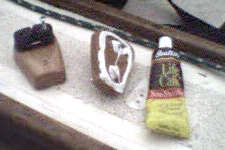 |
Here I'm ready to attach this block to the deck. The cam cleat is taken off the block, it is pre-drilled, and then a removeable caulk is used ... Life Calk, in this case, but you could also use 3M 4200 (not 5200, which never comes off!) Position and screw into the deck (there's not much upward stress on this, so you don't have to worry about having a backing block under the deck. |
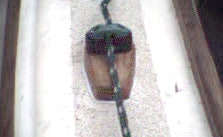 |
The finished cam cleat! Now to see if using two jib sheets works as well as one with the jib clubfoot. One advantage I found right away is that the two jib sheets can be attached to the jib before raising it ... with the clubfoot, you have to raise the jib half way, complicating raising the jib while underway. |
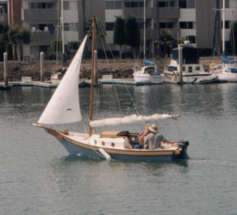 |
Here I've raised the jib at the ramp, and I'm motoring out the channel. If you look closely, you can see the port jib sheet is so loose it is dragging in the water (look just in front of the fender.) Now that's a loose sheet! The jib seems happy just flapping in the wind, without pushing the boat this way or that, which it never could do with the jib clubfoot up there. So I was happy at this point, but how would the jib shape be with the two sheets? Would it be much more of a hassle sailing having to tend them? |
 |
Ah, very nice. Using both sheets, its easy to get optimum shape
out of the jib. And it doesn't seem that much harder to remember
to deal with both sheets. When tacking, you just let the lee sheet
loose from the cam cleat (the lee sheet is the one on the side of the mast
that the jib is pushed over to by the wind, in this case, the starboard
sheet on this side of the boat.) And as you turn into the wind, the
jib just eases on over. The jib on the Weekender is not very powerful,
being about 80% of its maximum size, so it is very easy to control.
You do have to adjust the sheets for the optimum trim.
I can always switch back to the clubfoot later, and I recommend new sailors install the clubfoot first, just so they can get some sailing experience without worrying about the jib at first. Click this link to return to the Post Launch Modifications Page |

|
|
|
Next |
|
|